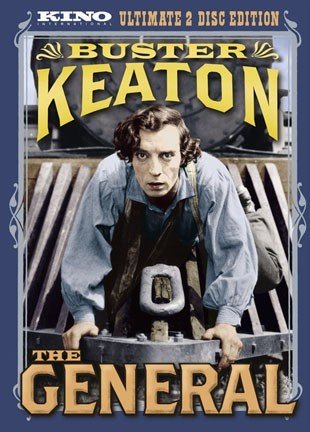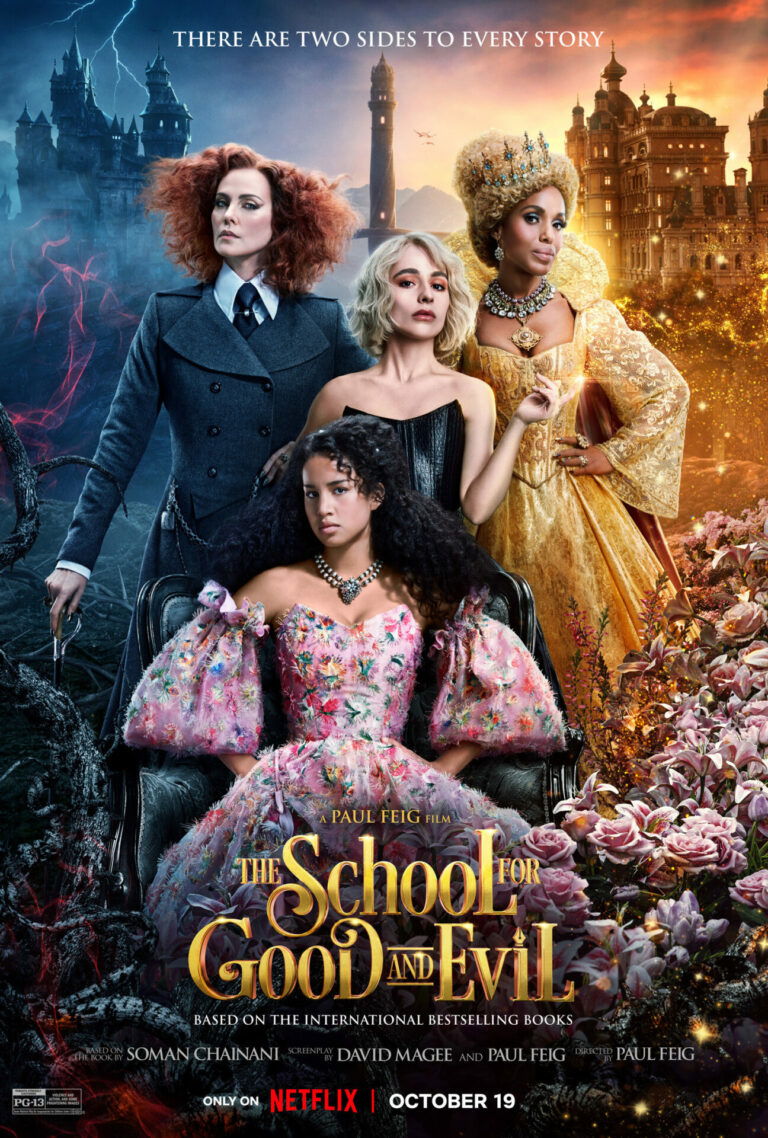“Confused Fairy Tale”

| None | Light | Moderate | Heavy | |
|---|---|---|---|---|
| Language | ||||
| Violence | ||||
| Sex | ||||
| Nudity |
What You Need To Know:
THE SCHOOL FOR GOOD AND EVIL contains spectacular visuals, lush costume design and many talented actors. However, it suffers from inconsistent pacing and clunky dialogue. THE SCHOOL FOR GOOD AND EVIL also promotes witchcraft, “blood” magic and a deconstruction of traditional Christian morality. is a poorly written adventure movie marred by some baffling moral decisions. The movie promotes witchcraft, “blood” magic, and a deconstruction of traditional Christian morality. THE SCHOOL FOR GOOD AND EVIL could have been a fun story about the children of famous fairy tale people, but the movie’s Anti-Christian, occult content is a big problem.
Content:
Strong mixed pagan worldview where occult witchcraft and “blood” magic are performed throughout the movie, traditional morality is deconstructed and there’s talk about providing “balance” to the conflict between Good and Evil, but there’s some redemptive content where people who chain themselves to the dark side are capable of returning to the light and sacrificing one’s life to save a friend is promoted at one point, along with some strong moral elements including sharing empathy and a deep heterosexual relationship is valued, but a bisexual protagonist kisses a boy and her best female friend, who’s a lesbian
About six obscenities (including one “s” word) and 16 light profanities, plus a witch enchants a flock of birds to “poop” on a caravan of school bully peasants
A man stabs his brother in the back; various witches perform “blood magic” where crystallized human blood flows in the air like water, a student turns into an uncontrollable dragon and wreaks havoc in the classroom, heroes and villains fight using bows and arrows and swords and magic spells, woman slices a magic wielder in the torso with a sword, woman threatens to throw a student off a balcony, and minor human wounds are shown
No sex scenes, but there’s talk about earning “true love’s kiss” and two female teenagers kiss (one seems bisexual and the other seems lesbian
No nudity, but there is some female cleavage
No alcohol use
No smoking or drugs; and,
The Good and Evil factions at the enchanted school emotionally manipulate their students to turn on their closest friends, a man literally backstabs his brother in the back and usurps his position at the school, a female character turns to the dark side and wages a war at the school.
More Detail:
After years of being treated as village misfits, a feisty seamstress and her empathetic witch friend apply for a magical education. The two teenagers enroll at “The School for Good and Evil,” where young heroes and villains learn to maintain the cosmic balance between Good and Evil, or between light and dark morality. Upon arrival, the two friends are thrust into a brutal fairytale civil war. Can our two best friends restore balance to the school and their friendship?
In the prologue, headmasters Rhian and Rafal (both played by Kit Young) do a practice duel outside the school grounds. Rafal complains that Rhian’s hero faction is suffocating the delicate balance between the forces of Good and Evil. Rhian denies his brother’s claim. In a fit of rage, Rafal tries to assassinate Rhian, the Good instructor, but Rafal is thrown off a cliff.
Fast forward years later to the medieval village of Galvadon. The movie introduces impoverished misfits Sophie (Sophia Anne Caruso) and Agatha (Sofia Wylie). Sophie is a pale yet ambitious seamstress yearning to earn respect as a princess. Her best friend is Agatha, an amateur yet empathetic spellcaster who aspires to be a powerful witch. The duo of teenagers decide they’ve had enough being chastised by their society. The two apply to the School for Good and Evil, a secret magical realm that trains the most respected heroes and villains in fairy tales. If accepted, both teenagers can escape their current predicament.
Agatha and Sophie arrive at the institution but are separated into two factions. Sophie begrudgingly enters the nefarious School of Evil while Agatha joins the School of Good. They discover the whole school is on the brink of a civil war. The Good faction, known as the “Evers,” seek to usurp higher grades than the Bad Faction, known as the “Nevers.” The dark faction seeks to earn their first academic victory against the heroes. Sophie and Agatha engage in classes for magic, high manners and self-defense.
Sophie and Agatha ask the headmaster (Laurence Fishburne) if there’s a way to change their destinies. The headmaster states that true love’s kiss is the only chance of fixing their school mixup. Moreover, he warns them of Rafal and his evil plan to switch the balance of moral power to the dark side. The balance between good and evil must not be overturned.
Meanwhile, Sophie gets corrupted by her ambition and vows to conquer the heroes. Agatha connects with her hero friends and uses her magic for good. She falls in love with Tedros, a heroic knight in her class. She believes Tedros is the key to true love’s kiss. However, the tension between the Nevers and Evers bleeds into a civil war.
Can Agatha save her best friend, Sophie, in time? Can the two heroines restore balance to the moral order?
THE SCHOOL FOR GOOD AND EVIL delegates most of its budget on dazzling special effects, intricate fight scenes and a stacked supporting cast of veterans such as (Charlize Theron, Laurence Fishburne, Cate Blanchett, etc.). Sadly, the movie neglects to put much effort into the writing side. The dialogue is clunky and the acting leaves a lot to be desired. The movie has a similar tone to the HARRY POTTER movies, but it lacks a cohesive vision.
In terms of worldview, THE SCHOOL OF GOOD AND EVIL fumbles in the acceptability department. Characters are either unlikable or merely forgettable. The students perform all sorts of magic to grave results. The villains cast “blood magic,” which controls human blood in the air and is banned by the school. The only likable character is Agatha, a grim witch who discovers she has a “good” heart. She holds a view that people are not merely good or evil but are complex individuals. However, Agatha doesn’t subscribe to any Christian, biblical ideals other than empathizing with other people.
The last strike against the movie is the obligatory “Modern Netflix” sensibilities. Blood, slight gore and violent battles are present in this PG-13 fantasy flick. The movie shoves obnoxious, contemporary pop music into most action scenes. It does away with the normal Christian notions of redemption and holding oneself accountable for one’s transgressions. This turns the school into complete chaos. Last but not least, the two leading girls share an onscreen kiss together. Apparently, it’s legally mandated that every Netflix movie has at least one LGBT paring.
To sum up, THE SCHOOL FOR GOOD AND EVIL is a poorly written, unacceptable fantasy adventure marred by baffling moral decisions. It contains spectacular visuals, lush costume design and a backlog of talented actors. However, it suffers from inconsistent pacing and clunky dialogue. Finally, despite some positive moral, redemptive content, THE SCHOOL FOR GOOD AND EVIL promotes witchcraft, “blood” magic and a deconstruction of traditional Christian morality, including comments about maintaining a cosmic balance between Good and Evil, Light and Dark.


 - Content:
- Content: 

